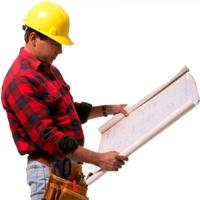Save Water by Using Drip Irrigation
by Guest Post on Apr 30, 2012
For several years I have been encouraging my design clients to use drip irrigation for their planting beds. Recurring drought in many parts of the country has made us reconsider how we use one of our planet's most valuable resources. The following is a brief introduction to the basic principles and advantages of drip systems.
The term "drip irrigation" describes the application of water not only by drip emitters but also by micro sprays. Both of these have two traits in common: they operate at low pressure, and they deliver a low volume of water compared to standard sprinklers.
Because the water is applied slowly on or near the ground, there should be no waste from runoff and little or no loss to evaporation. You position the emitters to deliver water just where the plants need it; you control penetration by varying the time the system runs and/or the emitters' delivery capacity (rated in gallons per hour).
You can also regulate the volume of water delivered to each plant by varying the type and number of emitters you set up for each.
Besides water conservation, the chief advantage of drip systems is flexibility. You can tailor the system to water individual plants by providing each with its own emitter(s), or you can distribute water over larger areas with micro sprays.
The standard layout might include hookups to two or more valves and many kinds of parts. Because the lines are above ground (they're easily concealed with mulch) and are made of flexible materials, changing the system is simple: just add or subtract lines and emitters as needed.
Your drip system can be simply attached to a hose end or screwed into a hose bibb. Or, if you prefer, you can connect it permanently to your main water source.
Drip irrigation is perfect for the driest zones of a landscape. A drip system saves water because very little is lost to evaporation or runoff.
By delivering water slowly and directly to a plant's root zone, drip irrigation promotes healthy plant growth. Water savings can easily be 50% or more versus traditional sprinkling. Drip emitters are well-suited for most xeric trees, shrubs, and perennials.
Keep in mind that sprinklers and drip emitters apply water at different rates (measured in gallons per minute and gallons per hour, respectively). It's best to put sprinklers and drip emitters on different irrigation valves. Also, a drip system requires a pressure regulator to limit pressure to the system and a filter to ensure that the tiny emitter openings do not clog.
One of the most interesting drip products developed recently is a dripper line with built-in, self-cleaning emitters spaced from 12" to 24" apart depending on the types of plants being watered. The line can be placed above or below the soil surface.
If you're installing a new landscape, or just a new shrub bed, consider using drip irrigation - you'll save a lot of water and energy and your plants will be healthier. For more information on drip systems, and anything else related to irrigation, see Jess Stryker's excellent tutorials at: http://jessstryker.com
Popular Articles
Three Places to Spend Money on the Exterior of Your Home
When you have the exterior of your home remodeled, you are investing, time, energy and convenience into the project and you want to make sure that...
98722 Views
Homemade Headboards-Make an Upholstered or Wooden Headboard
Homemade headboards can add a lot of personality to any bedroom. They can be coordinated with existing furniture and room decor or they can be the...
75186 Views
When to Use a Brush, Roller or Sponge Brush
Brushes are a good choice for painting trim and woodwork. They are also useful for cutting in the edges around the top and bottom edges and corners...
72269 Views
Creating a Cottage Kitchen with Bead Board
Kitchen decor can range from modern and bold to elegant and elaborate by using strategic kitchen pieces. One of the most popular decorating trends...
53600 Views
Gas Fireplace Diagnostics and Troubleshooting
Follow these steps for diagnosing and troubleshooting Gas Fireplaces repairs. For the average DIYer, this may seem intimidating, depending on the...
31000 Views
Latest Articles
How Much Does It Cost To Take A Bath?
Plumbers know that a bath may seem like a relaxing luxury, but the real cost extends far beyond your water bill. The average soak uses 35 to 50...
on Apr 8, 2025
10 Concrete Patio Ideas on a Budget
A concrete patio can be a game-changer for your outdoor space. It is durable, versatile, and can be customized to fit your style. But what if you...
on Mar 25, 2025
Tips for Creating a Stunning Personalized Photo on Canvas
Order the unique beauty of a personalized photo on canvas and bring your memories to life. With a customized photo on canvas, you can transform...
on Mar 7, 2025
Best Areas to Buy Property in Singapore for Long-Term Growth
Singapore's real estate market remains one of the most stable and lucrative in the world. With limited land supply, strong governmental...
on Feb 18, 2025
Troubleshooting Excess Water in Your HVAC Secondary Condensate Drain Pan
When maintaining your air conditioning system, it is easy to overlook the condensate drain pan - until excess water starts pooling in places where...
on Jan 12, 2025
Featured Articles
What Type of Licensed Contractor Should You Hire?
on Feb 28, 2017
Hire Contractors / Estimates

Looking for a specialty project? There are many types of contractors available for your home improvement needs. Finding the right type of...
Sponsored Articles
Best Areas to Buy Property in Singapore for Long-Term Growth
on Feb 18, 2025
Real Estate / Finance

Singapore's real estate market remains one of the most stable and lucrative in the world. With limited land supply, strong governmental...
Actions
Top Categories
- Garden / Landscaping / Patio — 264
- Kitchen / Bathrooms — 240
- Real Estate / Finance — 203
- Appliance / Repair — 186
- Interior Design / Decor — 184
- HVAC / Air Conditioning — 148
- Cleaning / Maintenance — 144
- Improvements / Remodeling — 131
- Plumbing / Basements — 118
- Floors / Tile / Hardwood — 116
- Doors / Garages — 113
- Safety / Security — 113
Articles Archive
More DIY Articles
When and How to Inspect Your Roof
The majority of homeowners tend to make a habit of taking a good look at their roof in the autumn before the winter months set in. Unless you are...
Easy Tips for a Quick Fix of your Dormitory
When many students open the doors of their dormitories, they find out that a room is empty and includes only four walls, which are usually white...
How to Restore the Grout between the Tiles
The tiles on the floor and wall seem to last forever, with a little cleaning and polishing they can look new, except for one thing. Over time the...
7 Self Storage Tips That Are Always Handy
If you are looking for self-storage, you are in luck! There are lots of amazing self-storage facilities around these days with different features....
3 Fixtures That May Not Be Worth the Price doing a Bathroom Remodel
During a bathroom remodel it is tempting to take all of the most expensive fixtures and try to shove them all in the same room. There are so many...

